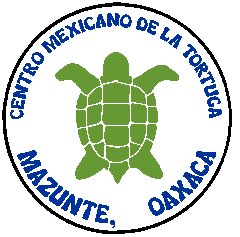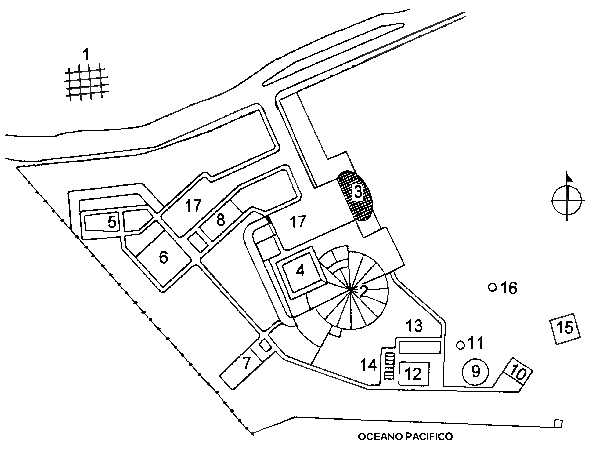
|
Centro Mexicano de la Tortuga
The National Mexican Turtle Center is under the direction of the National Fisheries Institute. It is located 12 kilometers west of Puerto Angel on the Puerto Angel - San Antonio federal highway.
|
|
|
In the face of the imminent extinction of the diversity of turtle species, the Mexican government called for the creation of the National Mexican Turtle Center in September of 1991. All varieties of sea turtle that live in coastal waters of Mexico are on exhibit. Additionally, there are 6 species of fresh water turtles and 2 species of land turtles. The complex covers 4 hectares (10 acres).
The research area coordinates the operation of satellite stations for the protection of important beaches in Oaxaca state. Biologists, veterinarians, and research groups study turtle behavior, diet, and monitor the quality of water in the tanks to gain insight into the problem of the protection of the species. Specific objectives are: 1) To distribute information regarding conservation and legislation for turtle protection, 2) to conduct scientific and technological research for turtle management, development, and conservation, 3) to promote the ecological tourism concept in the region, and 4) to support the community growth and development in the region.
The Turtle Center has started an agriforestry project and a chicken farm to help provide locals with alternatives to turtle harvesting.
 |
 |
 |
 |
 |

|
| The Turtle Center is located in the community of Mazunte which is a couple of miles east of Puerto Angel and Zipolite on Avenida Principal. See aerial photos of the Turtle Center and Mazunte. |
| The Center is open Tuesday through Saturday from 10:00 AM until 4:30 PM and Sunday from 10:00 AM until 2:30 PM. All tours inside the Turtle Center are conducted by a guide, without exception. There are guides available speaking the following languages: English, German , Italian, Spanish and Zapoteco. |
| ||||||||||||||||||||||||||||||||||||||||||
|
Sea turtles reach breeding age in 6 to 8 years. Many factors influence the return to the nesting beaches, such as "imprinting", kind of sand, temperature, streams, etc. The presence of a metallic mineral in the turtle's brain is a theory. Playa Escobilla is the main breeding ground for the Olive Ridley or Golfina turtle. The nesting season usually begins in May and lasts for several months. The turtles come to the beach in large numbers during the nighttime hours for 2-3 evenings after a full moon. They scoop out holes in the sand 2-feet deep, deposit their eggs and cover them up. At the peak of this activity, turtles number in the thousands. The eggs look like slimy Ping-Pong balls. The eggs are valued for food and many Mexicans believe they are powerful aphrodisiacs. The beaches are patrolled by military guards carrying M-16's to protect the turtles and their eggs from poachers. The Turtle Center maintains a research facility on Playa Escobilla. See aerial photo of facility. As a result of the preoccupation of government forces at Huatulco with searching for the rebels involved in the August 1996 attack on Huatulco, their previous duties of guarding Escobilla beach where the Golfina, an endangered sea turtle, lays its eggs were abandoned. This resulted in the looting of turtle eggs and the slaughter of the mothers. It is estimated that 800,000 to 1,000,000 eggs were taken. There were several arrests of looters and one truck was reportedly seized with a cargo of 526,000 eggs. See comment. The protection of the beaches has since resumed.
Biol. Cuauhtemoc Penaflores Salazar is the director of the Turtle Center and may be contacted at:
Centro Mexicano de la Tortuga Telephone & fax: (958) 584-3376 |
See also Of Turtles and Things,
an article from the Mexican Meanderings newsletter.
See also Fish of the Oaxacan Coast